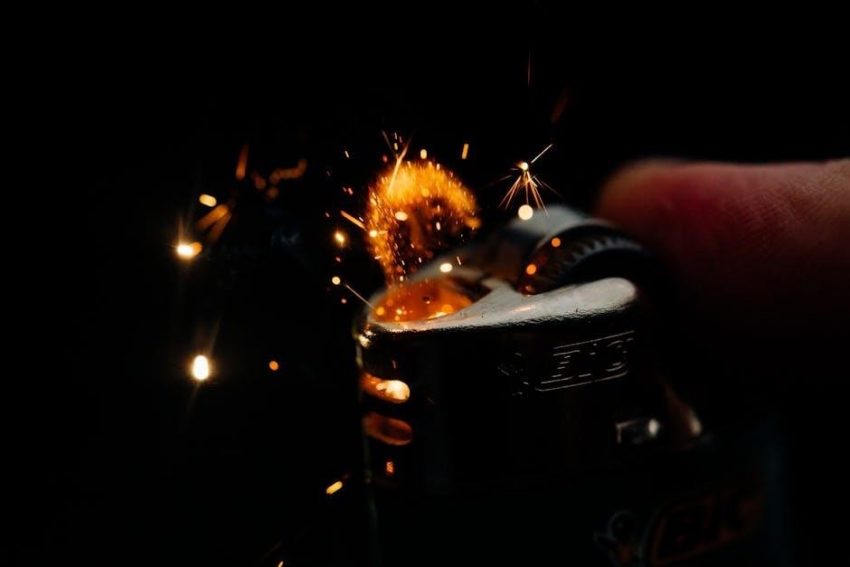Understanding your pressure cooker’s operation is crucial for safety and efficiency. Always read the manual to ensure proper usage, troubleshooting, and maintenance for optimal performance and safety.
1.1 Importance of Reading the Manual
Reading the pressure cooker manual is crucial for safe and effective operation. It provides essential safety guidelines, troubleshooting tips, and maintenance instructions. Understanding the appliance’s features and proper usage ensures optimal performance. The manual also covers warranty details and customer support information. Always refer to it before first use to avoid accidents and prolong the cooker’s lifespan. Proper usage prevents damage and enhances cooking results, making it a vital resource for all users.
1.2 Overview of Pressure Cooker Safety
Pressure cooker safety is paramount to prevent accidents and ensure efficient cooking. Always follow the manual’s guidelines to avoid mishaps. Never force-open the cooker while under pressure, as it can cause scalding. Avoid overfilling, as this may lead to overflow and potential hazards. Use the minimum recommended liquid to maintain safe pressure levels. Keep children away and avoid touching hot surfaces. Regularly inspect seals and valves for proper function to ensure safe operation and longevity of the appliance.

Safety Precautions When Using a Pressure Cooker
Always read the manual before use. Never touch hot surfaces or handles without protection. Keep children away and ensure the cooker is on a stable, heat-resistant surface.
2.1 General Safety Guidelines
Always follow the manufacturer’s instructions and read the manual thoroughly before using your pressure cooker. Ensure the appliance is placed on a stable, heat-resistant surface. Never leave the cooker unattended while in operation. Keep children away and avoid touching hot surfaces or handles without protection. Use appropriate utensils for handling food and liquids. Regularly inspect the cooker for damage or wear and tear. Follow proper procedures for opening and closing the lid to avoid accidents.
2.2 Handling Hot Liquids and Foods
Always handle hot liquids and foods with extreme care to avoid burns. Use oven mitts or tongs when lifting or pouring. Never leave the pressure cooker unattended while cooking. Keep children away from the appliance when it is in use. Allow the pressure to drop naturally before opening the lid. Use a long-handled spoon or spatula to stir or remove food. Avoid touching hot surfaces or handles without protection. Ensure the area around the cooker is clear of flammable materials.
2.3 Avoiding Common Safety Mistakes
Avoid common safety mistakes by never forcing the lid open, as this can cause scalding injuries. Do not use the pressure cooker for non-intended purposes, such as deep-frying. Always ensure the lid is properly sealed before cooking. Never leave the appliance unattended while in operation. Keep children away from the cooker during use. Avoid overfilling the cooker, as this can lead to clogging or dangerous pressure buildup. Always follow the manual’s guidelines for liquid levels and food quantities to prevent accidents.
Components of a Pressure Cooker
The pressure cooker includes a main pot, lid, sealing gasket, pressure regulator, and handles. These components work together to ensure safe and efficient cooking under pressure.
3.1 Identifying Key Parts
The pressure cooker consists of essential components, including the main pot, lid, sealing gasket, pressure regulator, and handles. The lid is designed to lock securely, ensuring pressure builds safely. The sealing gasket prevents steam from escaping, while the pressure regulator controls pressure levels. Handles provide safe grip for lifting. Familiarize yourself with these parts to understand their roles in safe and efficient cooking. Refer to your manual for detailed diagrams and descriptions.
3.2 Understanding the Pressure Regulator
The pressure regulator is a critical component that controls the pressure level during cooking. It ensures safe operation by maintaining the set pressure and preventing over-pressurization. Most regulators feature high and low-pressure settings, suitable for various recipes. Proper understanding of its operation is essential for troubleshooting and ensuring optimal performance. Always refer to your manual for specific instructions on adjusting and maintaining the regulator, as designs may vary between models.
3.3 The Role of the Sealing Gasket
The sealing gasket is essential for creating a tight seal in your pressure cooker. It ensures pressure builds safely and efficiently, preventing leaks. Regular inspection is crucial to identify wear and tear. Replace the gasket if damaged to maintain safety. Cleaning the gasket after each use prevents food residue buildup. A well-maintained gasket ensures optimal performance and longevity of your pressure cooker, guaranteeing safe and efficient cooking every time.
Installation and Setup
Begin by unpacking and inspecting all components for damage. Wash and dry parts before assembly. Follow the manual’s guide to ensure correct installation and setup for safe, efficient operation.
4.1 Unpacking and Initial Inspection
Carefully unpack your pressure cooker and inspect for any visible damage or defects. Check all components against the manual’s list to ensure nothing is missing. Look for signs of shipping damage, such as dents or cracks. Wash and dry all parts thoroughly before assembly. If any issues are found, contact customer support immediately. Proper unpacking and inspection are crucial for safe and effective use. Follow the manual’s guidelines for unpacking and preparing your appliance. Ensuring all parts are included and in good condition is essential before proceeding.
4.2 Assembling the Pressure Cooker
Assemble your pressure cooker by attaching the lid, regulator, and handles according to the manual’s instructions. Ensure all parts are securely fastened and properly aligned. The regulator should fit snugly, and the sealing gasket must be correctly positioned to prevent leaks. Refer to the provided diagrams for guidance. Handle all components with care to avoid damage. Once assembled, test the lid lock mechanism to ensure it functions smoothly. Proper assembly is vital for safe and efficient cooking. Follow the manual step-by-step to avoid mistakes.
4.4 Choosing the Right Heat Source
Selecting the appropriate heat source ensures optimal performance and safety. For stovetop models, use a gas, electric, or induction stove, avoiding open flames that could damage the cooker. Electric pressure cookers require a compatible power source. Always follow the manual’s recommendations for heat settings. Avoid using high heat initially to prevent pressure buildup. For electric models, place on a heat-resistant surface. Ensure the cooker is centered on the burner for even heat distribution. Refer to the manual for specific heat source guidelines.
Operating Instructions
Start by ensuring the lid is securely closed. Plug in the cooker, set the timer, and select the desired pressure level. Let the cooker do the rest.
5.1 Starting the Pressure Cooker
Begin by plugging in the pressure cooker and ensuring the lid is securely closed. Set the timer and select the appropriate pressure level using the control panel. Press the start button to initiate the cooking cycle. Allow the cooker to build pressure naturally; the timer will begin once pressure is reached. Never attempt to open the lid while the cooker is in operation. Keep children away for safety.
5.2 Adjusting Pressure Settings
Adjust the pressure settings based on the type of food being cooked. Use the control panel to select high or low pressure, typically 10-15 PSI for meats and 5-8 PSI for vegetables. Ensure the lid is sealed properly before increasing pressure. Avoid opening the lid while the cooker is under pressure. Refer to the manual for specific pressure recommendations for different foods to achieve optimal results and safety. Always allow pressure to release naturally or manually as instructed.
5.3 Releasing Pressure Safely
Releasing pressure safely is essential to prevent accidents. Use natural release by turning off the heat and letting pressure drop on its own. For quick release, open the valve slowly while wearing oven mitts to protect from steam. Always wait at least 10 minutes before attempting any release. Never force the lid open, as residual pressure may still be present. Ensure the pressure cooker has enough liquid to avoid overheating. Follow the manual’s specific instructions for your model, and check for a safety lock that prevents lid opening under pressure. Maintain the pressure release valve to prevent clogs. Stand back during release to avoid hot steam, and never leave the cooker unattended. Test for full pressure release by gently turning the lid. Patience and caution are key to safe and effective pressure cooker use.

Cooking Guidelines
Always follow tested recipes and guidelines for best results. Use adequate liquid to prevent overheating. Avoid overfilling the cooker. Adjust cooking times according to food type and quantity.
6.1 Recommended Liquid Levels
Always use at least 1/2 cup of liquid for proper pressure regulation. For most recipes, do not exceed 2/3 of the cooker’s capacity. For grains or legumes, liquids should cover the food by 1-2 inches. Never operate without liquid, as it can damage the cooker. Adjust quantities based on food type and recommended ratios. Excess liquid may lead to undercooked food. Refer to your manual for specific guidelines to ensure safe and efficient cooking.
6.2 Cooking Time Adjustments
Cooking times in a pressure cooker are typically reduced by 70% compared to traditional methods. Adjust based on food type and quantity. For example, rice cooks in 3-5 minutes, while beans may require 5-15 minutes. Always consult your manual for specific guidelines. Overfilling can extend cooking times, while underfilling may undercook food. Start with shorter times and adjust as needed. Ensure liquids cover food adequately for even cooking. Refer to your manual for precise timing recommendations.
6.3 Avoiding Overfilling the Cooker
Never fill the pressure cooker beyond two-thirds of its capacity to prevent overflow and ensure safe operation. Overfilling can lead to clogged valves, uneven cooking, and messy cleanup. For foods that expand during cooking, like grains or beans, fill only to half capacity. Always measure liquids and ingredients carefully. Refer to your manual for specific guidelines on maximum fill levels to avoid potential hazards and maintain optimal performance.
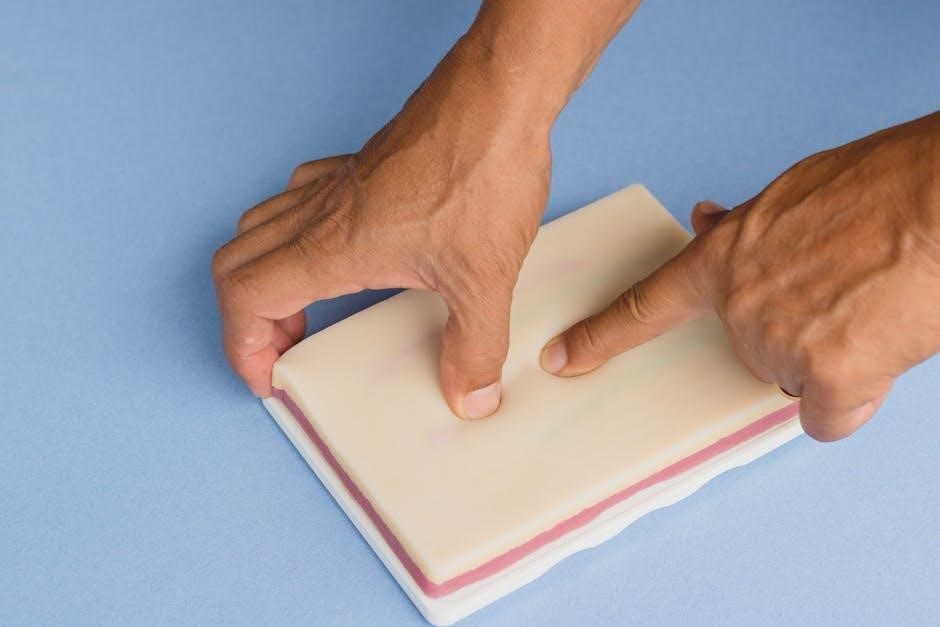
Common Recipes for Pressure Cookers
Explore versatile and easy-to-follow recipes designed for pressure cookers, from hearty stews to quick soups. Adapt your favorite dishes with adjusted cooking times and ingredient ratios for perfect results.
7.1 Simple Meals to Get Started
Begin with easy recipes like chili, rice dishes, or soups. Follow the manual’s guidelines for liquid ratios and ingredient quantities to ensure successful outcomes. Start with basic proteins like chicken or beans, and gradually experiment with more complex flavors. Always refer to the recommended cooking times and pressures for specific ingredients. These simple meals will help you build confidence and mastery over your pressure cooker’s capabilities while minimizing risks of errors.
7.2 Adapting Your Own Recipes
Adapting your favorite recipes for the pressure cooker requires understanding how cooking times and liquid levels change. Start by reducing cooking times significantly, as pressure cooking is faster. Ensure adequate liquid is present to maintain pressure and prevent burning. Begin with familiar dishes, then gradually experiment with new flavors. Adjust seasonings and spices, knowing flavors may intensify under pressure. Always refer to the manual for specific guidelines to achieve the best results safely and efficiently.
7.3 Recommended Ingredients and Quantities
When using your pressure cooker, choose ingredients suitable for high-moisture cooking. Grains, legumes, and meats work well. Avoid overfilling, especially with expanding foods like rice or beans, as they can block the valve. Always use at least 1-2 cups of liquid to ensure proper pressure buildup. Adjust quantities based on serving sizes and recipe requirements. Balance flavors with spices and acids, as they intensify under pressure. Follow manual guidelines for optimal results and safety.
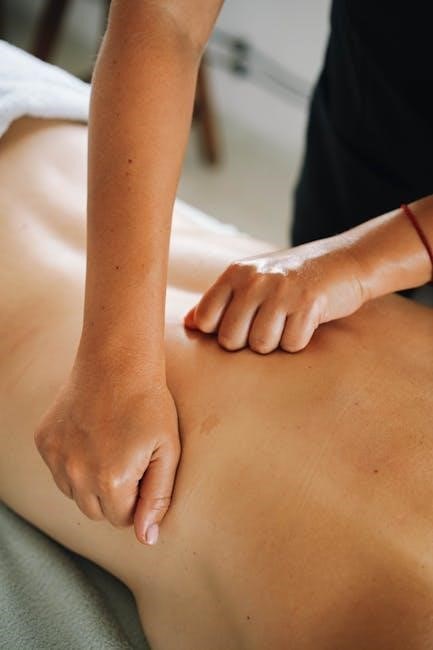
Maintenance and Cleaning
Regular cleaning ensures optimal performance and safety. Wash inner pots, lids, and gaskets with mild detergent. Dry thoroughly after cleaning to prevent rust. Store properly.
8.1 Cleaning the Inner Pot
Regularly clean the inner pot with mild detergent and warm water to remove food residue. Avoid using abrasive cleaners or scourers to prevent damage. Rinse thoroughly and dry to prevent rust. For tough stains, soak the pot before cleaning. Never put the inner pot in a dishwasher. Always handle the pot with care, especially when hot, to avoid burns. Follow manufacturer guidelines for specific cleaning instructions to maintain longevity and hygiene.
8.2 Checking and Replacing Seals
Inspect the sealing gasket regularly for wear, cracks, or deformation. Clean it with mild soap and water, ensuring no food particles remain. Replace the seal if damaged, as it may cause leaks. Consult the manual for replacement guidelines. Store the gasket separately to prevent drying out. Always ensure the seal is properly aligned before use to maintain pressure and safety. Replace every 1-2 years or as recommended by the manufacturer.
8.3 Storing the Pressure Cooker
Always store the pressure cooker in a cool, dry place, away from direct sunlight. Ensure the cooker is clean and completely dry before storage to prevent rust or mold. Detach the lid and gasket, storing them separately to allow ventilation. Avoid stacking heavy objects on the cooker to prevent damage. Follow the manufacturer’s guidelines for storage to maintain its longevity and performance. Proper storage ensures safety and readiness for future use.
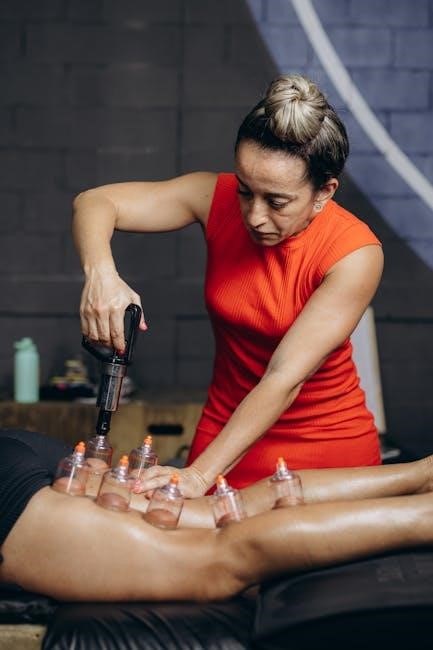
Troubleshooting Common Issues
Identify and resolve common issues promptly to ensure your pressure cooker functions safely and efficiently. Refer to the manual for specific solutions and guidelines.
9.1 Pressure Regulator Malfunction
A malfunctioning pressure regulator can lead to incorrect pressure levels, posing safety risks. Check for blockages, ensure proper installation, and consult the manual for adjustment guidance. If issues persist, avoid disassembling the regulator and contact customer support for assistance. Regular maintenance and inspections can prevent such malfunctions, ensuring safe and efficient cooking. Always refer to the troubleshooting section in your pressure cooker manual for detailed solutions and guidelines.
9.2 Leaks During Cooking
Leaks during cooking can occur due to an improperly sealed lid or a damaged gasket. Ensure the lid is securely locked and the gasket is clean and undamaged. Avoid overfilling, as this can cause blockages in the steam vent. If leaks persist, refer to your pressure cooker manual for troubleshooting steps or replace worn-out seals. Regular inspection and maintenance can prevent such issues, ensuring safe and efficient cooking.
9.3 Burnt Food Prevention
To prevent burnt food, ensure adequate liquid levels, as insufficient water can lead to scorching. Always use at least the minimum recommended liquid, typically 1/2 cup. Avoid overfilling, as this can block the steam vent and cause uneven cooking. Regularly monitor cooking time and adjust based on the recipe. If food starts to burn, immediately release pressure and stir. Refer to your manual for specific guidelines on liquid ratios and cooking times to achieve perfectly cooked meals every time.
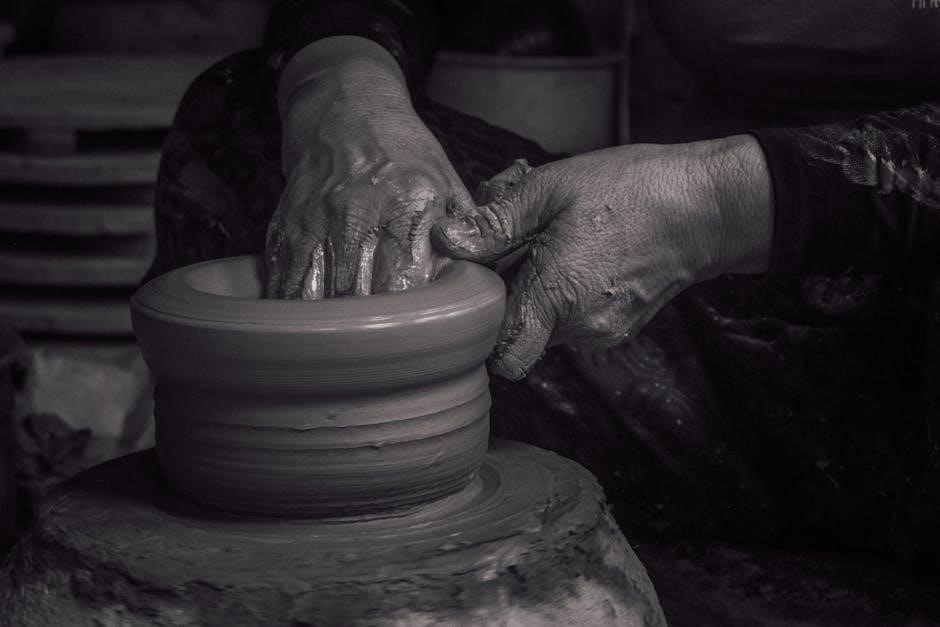
Warranty and Support Information
Understand your warranty coverage by registering your pressure cooker. Refer to the manual for details on warranty duration, terms, and contact information for customer support.
10.1 Understanding Your Warranty
Review the warranty section in your pressure cooker manual to understand coverage details, duration, and terms. Ensure proper registration for warranty validation. The manual outlines what is covered, such as defects in materials or workmanship, and provides steps to file claims. Understanding your warranty ensures protection and support for your appliance, offering peace of mind for repairs or replacements within the specified period.
10.2 Contacting Customer Support
For assistance with your pressure cooker, refer to the manual for customer support contact details, including phone numbers, email, and website. Have your model number and purchase details ready for efficient service. The manual also provides guidance on troubleshooting and warranty claims. Reach out to support for repairs, replacements, or general inquiries to ensure your appliance functions optimally. Timely assistance is available to address any concerns or issues you may encounter.
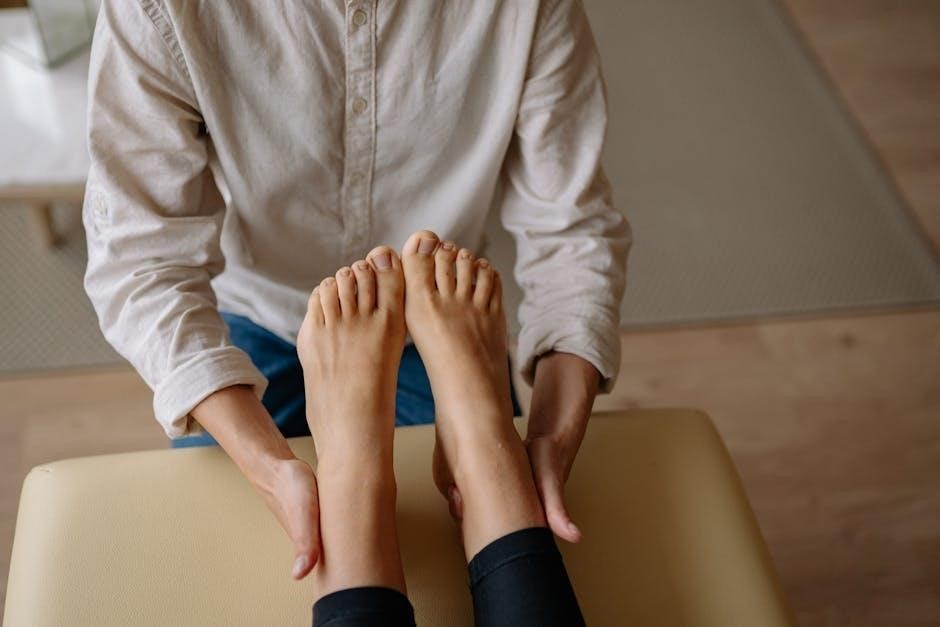
User Guide for Pressure Cooker Manuals
Your pressure cooker manual is a comprehensive guide to understanding its features, operation, and maintenance. It helps you master cooking techniques and troubleshoot common issues effectively.
11.1 Navigating the PDF Manual
Navigating your pressure cooker manual PDF is straightforward. Use bookmarks to quickly access sections like safety guidelines, operating instructions, and troubleshooting. The search function helps locate specific topics, such as cooking times or maintenance tips. Visual aids like diagrams and icons enhance understanding. Always refer to the table of contents for a structured approach; Familiarize yourself with the layout to ensure safe and effective use of your pressure cooker.
11.2 Finding Specific Instructions
To find specific instructions in your pressure cooker manual, use the index or search function to locate topics quickly. Look for sections like “Operating Instructions” or “Troubleshooting” for detailed guidance. Pay attention to highlighted tips and warnings for safe usage. Visual aids, such as diagrams, can help clarify complex steps. Ensure you understand symbols and abbreviations used in the manual. This will help you navigate and apply the instructions effectively for optimal performance and safety.

Frequently Asked Questions (FAQs)
Common questions about pressure cooker usage, safety, and troubleshooting are addressed in the manual. Refer to this section for quick solutions and clarification on key concerns.
12.1 Common User Queries
This section addresses frequently asked questions about pressure cooker usage, such as safe operating procedures, recommended liquid levels, and troubleshooting common issues. Users often inquire about adapting recipes, preventing overfilling, and understanding pressure regulator functions. Additionally, queries about maintenance, cleaning, and warranty information are common. The manual provides clear guidance to ensure safe and effective use, helping users resolve concerns and optimize their cooking experience with ease and confidence.
12.2 Addressing User Concerns
This section provides solutions to common concerns, such as troubleshooting malfunctioning regulators, addressing leaks, and preventing burnt food. It also offers guidance on adapting recipes and avoiding overfilling. Users can find tips for maintaining safety, optimizing cooking times, and understanding warranty coverage. Additionally, it explains how to access customer support and online resources for further assistance, ensuring a smooth and confident cooking experience with your pressure cooker.

Additional Resources
Access downloadable manuals, online support, and recipe guides for your pressure cooker. Find model-specific resources like Presto and Power Pressure Cooker XL manuals online.
13.1 Downloading the Manual
To download a pressure cooker manual, visit the manufacturer’s official website or authorized portals. Search for your specific model, such as Presto or Power Pressure Cooker XL, and locate the PDF version. Ensure the manual is from a trusted source to avoid incorrect or unsafe information. Many brands offer free downloadable manuals, making it easy to access guidelines, troubleshooting tips, and warranty details. Always check for the latest updates to stay informed.
- Visit the official manufacturer’s website.
- Search for your pressure cooker model.
- Download the PDF manual for free.
- Verify the source for authenticity.
Refer to customer support if assistance is needed.
13.2 Accessing Online Support
Accessing online support for your pressure cooker is straightforward. Visit the manufacturer’s official website for FAQs, troubleshooting guides, and downloadable manuals. Many brands offer dedicated customer support via email or phone for specific inquiries. Additionally, online forums and communities provide user-generated tips and solutions. Ensure to use official channels for accurate and safe information to maintain your cooker’s performance and address any concerns effectively.
Mastering your pressure cooker begins with understanding its manual. Safe usage, proper maintenance, and exploring recipes ensure a delightful cooking experience while preserving nutrients and saving time.
14.1 Final Tips for Safe and Effective Use
Always adhere to the manual’s guidelines to ensure safe and efficient cooking. Avoid overfilling, use the minimum recommended liquid, and never force the lid open. Regularly clean and inspect parts like seals and regulators. Store the cooker properly when not in use. Experiment with recipes cautiously, adjusting times and quantities as needed. Proper maintenance and adherence to safety tips will extend the cooker’s lifespan and enhance your cooking experience.
14.2 Encouraging Further Exploration
Exploring the full potential of your pressure cooker can lead to exciting culinary discoveries. Experiment with new recipes and techniques, and consider downloading additional resources or recipe booklets. Join online communities or forums to share ideas and learn from experienced users. By continuing to explore, you’ll unlock the versatility of your pressure cooker and enhance your cooking skills, ensuring a rewarding and creative experience in the kitchen.

